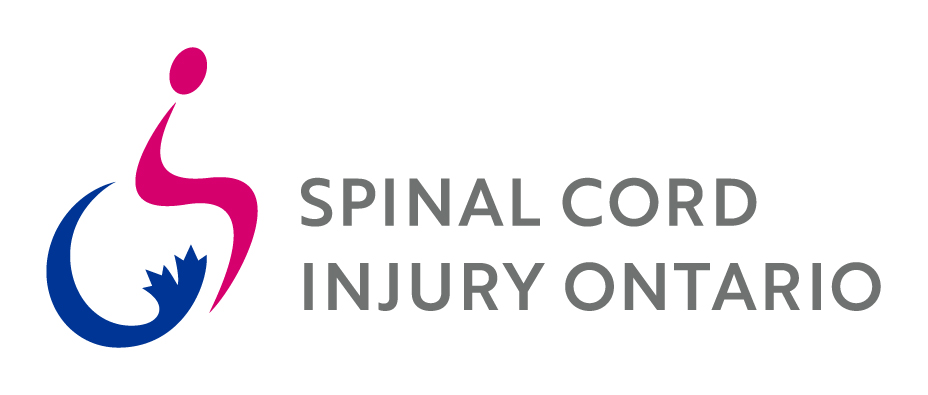The numbers are sobering. Neurotrauma injuries affect more than 500,000 Ontarians and their families, at a healthcare cost of about $3 billion annually. When it comes to spinal cord injury, about 85,500 Canadians can be counted, with that number estimated to rise to 120,000 in 2030. In addition, an SCI is one of the most medically complex, high cost and dramatically lifechanging events any person can face.

But as our community well knows, those facts don’t tell the full story of living with an SCI or answer the most important questions. How can we achieve the greatest quality of life? Overcome barriers to pursue our goals and dreams? Become the best parent, partner, leader, colleague and person possible?
Every person’s journey is different, but there is one vital need: meaningful research that directly informs and improves healthcare practices across the province.
That’s where the Ontario Neurotrauma Foundation (ONF) comes in. Established in 1998 through the collective efforts of the Canadian Paraplegic Association (now SCIO), the Canadian Spinal Research Organization, the Ontario Brain Injury Association, and the Rick Hansen Foundation, ONF is a non-profit organization funded by the Ontario government. Its mission is to enhance the quality of life for those living with an acquired brain injury (ABI) or spinal cord injury (SCI) and a focus on injury prevention.
Nancy Lawson is one of many passionate individuals who helped found ONF over two decades ago. A consultant and MBA with professional experience in the not-for-profit sector and personal experience with an SCI, Nancy drafted the proposal that led to the Ontario government promising $25 million in funding over ONF’s first five years, with renewal periods thereafter.
“The SCI space in Ontario was pretty disjointed at that time,” says Nancy. “On the one hand, an injury has an enormous impact on individuals and families—physically, emotionally and economically—and consumes significant health care and social resources over a lifetime. On the other hand, knowledge of SCI wasn’t great. Best practices in care and rehabilitation weren’t consistently available. And research wasn’t well coordinated. ONF was formed to help lead in all those areas.”

ONF’s CEO Kent Bassett-Spiers agrees with Nancy’s assessment and summarizes the spinal cord injury landscape 20 years ago in one simple phrase.
“A lot of gaps,” he says. “Gaps in the body of research itself, in standard health care practices, in the communication between researchers and practitioners, and in implementation. Ontario lacked a central resource to help guide relevant studies, share knowledge and ground health services in the best possible evidence. More than twenty years later, there are still gaps. But they’re narrowing. And we’ll keep narrowing them until they vanish and we’ll continue to support the communities by connecting practitioners with the latest research to implement standardized best-practices.”
To reach and change the lives of as many people as possible, ONF funds research studies that meet the priorities identified by the SCI community.
“We’re more prescriptive than we used to be,” says Kent. “Where are we going to see tangible improvements in people’s lives? What are the most pressing concerns? What is the community asking for? Answers include preventing secondary complications, bladder care, chronic pain, improved hand function, the highest standards of rehabilitation, and a more efficient and responsive health care system. The needs of people living with neurotrauma should drive the research agenda.”
With those research priorities set through community consultation as well as strategic partnerships with groups like SCIO, ONF supports studies and clinical interventions that minimize further damage, advance care, and accelerate functional improvements.
For example, it has supported the Riluzole Trial, a drug that has neuroprotective properties and may result in functional recovery. It has also recently funded studies in reactive balance training, electrical stimulation therapy, and the viability of nerve and cell transfers, to name just a few. Each of these areas has the potential to improve clinical practice and quality of life.
Melissa Felteau has firsthand experience with ONF-funded research that has transformed the lives of people living with an acquired brain injury. After her own injury in 1993, Melissa found it difficult to access services to help with her recovery, including ongoing rehabilitation. So she began researching and developing ways to help herself. She applied to ONF to fund a pilot study, was awarded, and has received additional funding over the years.
With that support, Melissa developed and tested Mindfulness-Based Cognitive Therapy (MBCT) for traumatic brain injury.
“In our pilot study, 58% of people suffering from depression after a brain injury recovered from that depression,” she says. “And a year later, they remained that way. That was the beginning of a series of studies on MBCT that culminated in the gold standard of research: a multi-site randomized trial. That trial proved its efficacy, and MBCT became the first recognized program for helping to relieve depression and anxiety in people with brain injuries.”
The impact of Melissa’s pioneering program illustrates the importance of funding studies that have a direct impact on quality of life.
“The research and implementation activities that ONF funds are constantly evolving,” says Melissa. “They make sure that we have the most reliable, relevant and up-to-date information possible about ABI and SCI. That translates to people achieving the fullest recovery and the highest quality of life possible. Which puts people in the community, contributing to the economy, and out of the healthcare system as much as is possible. That is an efficient use of healthcare dollars.”
Back in the 1990s, Barry Munro was making the same case to the Ontario government: funding this new foundation would significantly reduce hospital stays—both during acute care and for secondary complications—throughout the lifetime of those living with a TBI or SCI.
Barry is Chief Development Officer of ONF and chair of the Canadian Spinal Research Organization. Retired from his work as a personal injury lawyer, Barry now dedicates all of his time finding a cure for paralysis. Twenty-five years ago, he played a key role in securing the funding that ONF needed to launch and operate.
“ONF has played a massive role in establishing province-wide standards for primary care and rehabilitation,” says Barry. “Even more, it has earned a national and international reputation as a leader in TBI and SCI research, knowledge sharing, and evidence-informed practices. Before it existed, these were neglected conditions and practitioners operated in siloes. Now, with the collaborations and partnerships it has built, the ONF brand has become a star.”
ONF and its many partners work toward the same end: improving quality of life from the moment of injury onward.
“The better health and the greater independence people living with SCI achieve, the less attendant care and health care costs they generate,” says Barry. “That means that the more money the government puts into organizations like ONF, the more money it saves. I would even say that the savings are exponential.”
Barry briefly ponders a world without ONF and all it achieves through its extensive and impressive collaborations and partnerships.
“It doesn’t really bear thinking on,” he concludes. “We would move backward to the fractured and siloed system we used to have. This Foundation works with the best researchers, experts and practitioners in the world. Not only that, it’s the glue that holds them all together. There’s nothing else like it. It’s a trailblazer in this field and a provincial gemstone.






